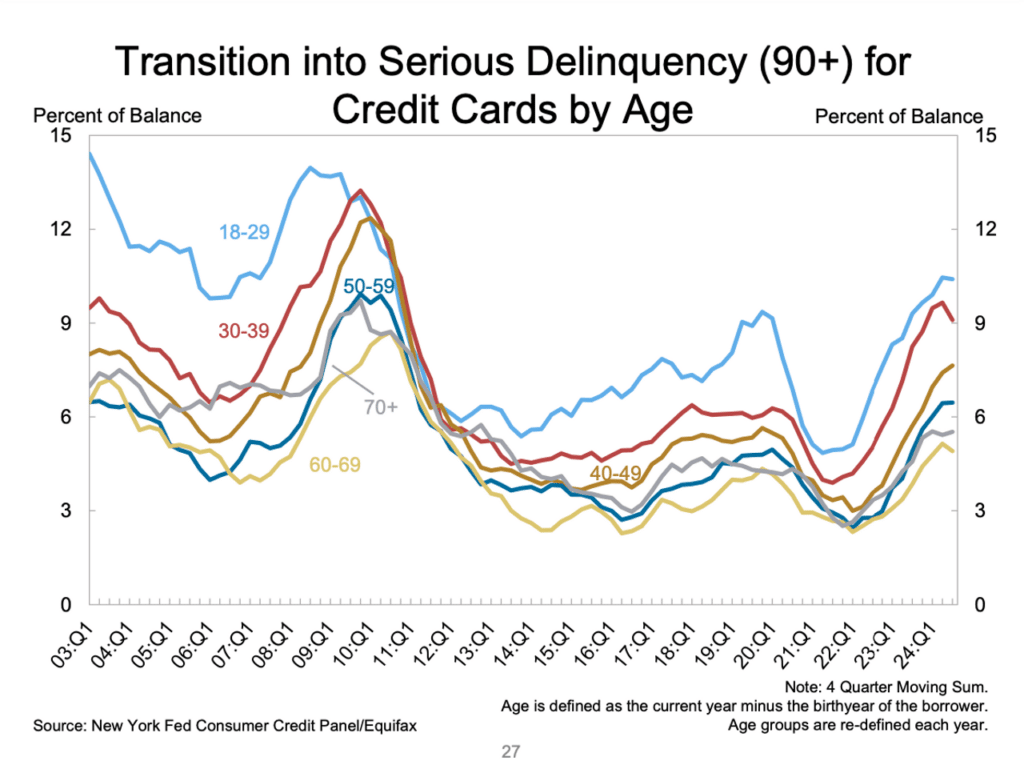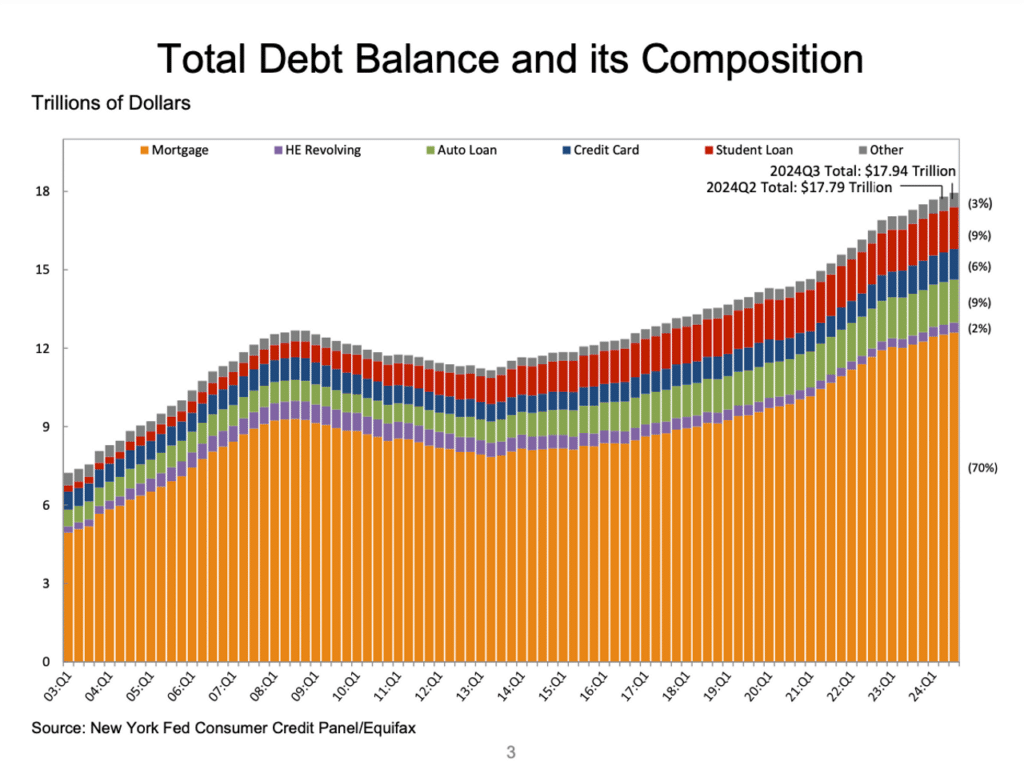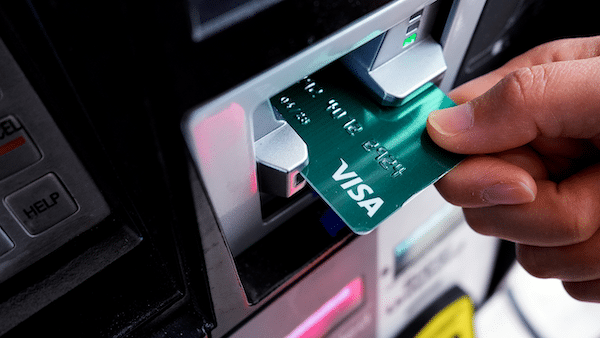Credit card defaults in the U.S. reached their highest level since the 2008 financial crash during the first nine months of 2024, according to figures compiled by BankRegData and cited in a recent Financial Times article. Credit card lenders were also forced to write off $46 billion in seriously delinquent debt balances through September 2024, up 50 percent from the same period the year before, and the highest level in 14 years.
These figures reveal widespread social distress and economic insecurity in America’s supposedly booming economy. With rising expenses and stagnant wages, tens of millions of workers and lower middle class people have been forced to rely on their credit cards to pay for food, gas, medicine, clothing and other living costs. Hit by elevated interest rates, they have not been able to make their credit card payments.
“High-income households are fine, but the bottom third of U.S. consumers are tapped out,” said Mark Zandi, the head of Moody’s Analytics, told the Financial Times.
Their savings rate right now is zero.

[Photo: Federal Reserve Bank of New York]
“Nearly half of Americans still have debt from the holidays from last year,” said WalletHub writer and analyst Chip Lupo, adding that a third of respondents to his organization’s survey reported they would spend less this year on holiday shopping.
Unable to pay off their balances in full, borrowers sent the credit card companies $170 billion in interest payments in 2024. As of last Friday, the average credit card interest rate was 20.35 percent, according to Bankrate.
These loan shark rates have allowed the biggest credit card lenders—Visa, Mastercard and Capital One—to reap record profits. Visa, the largest, booked $19.7 billion in 2024 profits (up 16 percent from FY 2023) and enjoyed a 55 percent profit margin (up from 52 percent in FY 2023); 2024 revenues shot up 10 percent to $35.9 billion.
But financial pressure on credit card holders has led to a spike in defaults and delinquencies. The percentage of overall loans that have been marked as unrecoverable has now hit 6.1 percent, from 5.2 percent a year ago, according to Capital One, the US’s third largest credit card lender. Credit card delinquency rates, considered one step from loans that must be written off, peaked in July, according to data from Moody’s. Rates remain higher than pre-pandemic levels with $37 billion in balances at least one month overdue.

[Photo: Federal Reserve Bank of New York]
A breakdown of these debts include:
- Mortgage balances grew by $75 billion during the third quarter of 2024 and totaled $12.59 trillion at the end of September.
- Balances on home equity lines of credit (HELOC) rose by $7 billion, the tenth consecutive quarterly increase after 2022Q1, and there is now $387 billion in aggregate outstanding balances.
- Auto loan balances rose by $18 billion, and now stand at $1.64 trillion.
- Student loan balances grew by $21 billion, and now stand at $1.61 trillion.
- Other balances, which include retail cards and other consumer loans, remained effectively flat, with a $2 billion increase.
Household budgets eaten up
The average family budget is being all but eaten up by high living costs, according to data from the Consumer Expenditure Survey from the U.S. Bureau of Labor Statistics (BLS).
- The average household earned $101,805 in 2023 before taxes. Average net income was $87,869 a year, according to the BLS.
- Out of this, the average household spent $77,280 on various expenditures in 2023, up $4,313—or 5.9 percent—from 2022.
- Housing ($25,436 or 32.9 percent), transportation ($13,174 or 17 percent) and food ($9,985 or 12.9 percent) make up the largest portions of the household budget.
What this means is that after monthly expenditures, which have risen, households have virtually nothing left to spend on what the Bureau of Labor Statistics defines as “discretionary spending.” This include elemental necessities, such as clothing, education, household goods and personal care, along with such requirements for a healthy and enjoyable life as entertainment, travel, leisure and eating out.
“Many Americans spend a sizable amount of their income to keep a roof over their heads, food on the table and a means of transportation,” the Bankrate article on the government’s household survey noted.
Inflation has cooled significantly from its 40-year-high in 2022, yet prices remain elevated on various goods and services, leaving consumers with less money in their budgets for such financial matters as savings and debt repayment.
It continues:
Only 16 percent of U.S. adults say they have enough emergency savings to cover between three and five months’ worth of living expenses, while 27 percent report having no emergency savings at all, Bankrate’s 2024 Emergency Savings Report found.
In many parts of the country, after-tax household incomes are far less than the $87,869 figure cited by the Bureau of Labor Statistics. According to Smartasset’s federal income tax estimator for 2024-25 taxes, net income would be far lower in Houston ($85,569), San Francisco ($81,661), Chicago ($81,000), Detroit ($79,503) and New York City ($78,283). The subtraction of $77,280 in yearly expenses or even more in higher-cost areas is what has left many households with a negative net income, forcing them further and further into debt.
Particularly crushing has been the cost of housing, which has jumped 30.4 percent nationwide between 2019 and 2023. The average monthly rent rose to $2,009 in October 2024, while property taxes and mortgage balances increased.
A survey by the U.S. Census Bureau showed that half of renter households (21 million) were “cost-burdened” in 2023, meaning they spent more than 30 percent of their income on housing.
But even more staggering was a November 2024 report by Redfin that showed more than one-fifth of U.S. renters reported spending their entire regular income on rent. A Redfin-commissioned survey conducted by Ipsos in September 2024, found that 20 percent of respondents had to work second jobs to afford rent, 14 percent relied on family cash gifts and 13 percent had to pull money out of their retirement funds early.
The high cost of housing has caused a record number of young Americans (31 percent) to move back in with their families or never move out. Nearly one-third, or 31 percent, of Generation Z adults—born between 1996 and 2012—live at home with parents because they cannot afford to buy or rent their own space, according to a 2023 report by Intuit Credit Karma. One-quarter of young adults live in a multigenerational household, up from just 9 percent five decades ago, according to Pew Research, due to financial pressures, including ballooning student debt and housing costs.

Boeing workers on the picket lines in Everett, Washington.
Commenting on the precarious situation young workers in particular face, a Stellantis worker at the Sterling Heights Assembly Plant in suburban Detroit told the World Socialist Web Site,
The company fired all the workers who were supplemental employees, and many still don’t have jobs. Unemployment is paying six or seven hundred dollars a week, and that doesn’t make it. No wonder people are resorting to violence and robbing stores. Something needs to change, and in a hurry.
The rising cost of living has been a major factor in the growth of the class struggle over the last two years, including the strikes by 33,000 Boeing workers and 47,000 East and Gulf Coast port workers in 2024. As a young striking Boeing worker in Everett, Washington, told the WSWS, “Rent in the Seattle area is roughly $3-$4,000 for a single-family home. I don’t know how anyone can afford to live here. We definitely can’t.” He concluded:
New hires, old hires, retirees, we’re sticking together for a common goal, and that’s better quality of life for each of us and our families.
These conditions led to the electoral debacle for the Democratic Party and its candidate Kamala Harris, who expressed nothing but indifference to the social catastrophe confronting the working class and a single-minded focus on expanding American imperialism’s wars.
The opposition of the working class will grow in 2025 as millions of workers, including those who voted for Trump, come face to face with his government of billionaires and fascists whose program of social counterrevolution is aimed at further enriching the oligarchy at the expense of workers and their families.
To ensure economic security, there must be immediate debt relief for the millions who work as virtual indentured servants to giant financial institutions, which have received government bailouts. This should include reducing debt payments to affordable levels, abolishing usurious interest rates, bank fees and overdraft fees and cancelling student loan debt. But these and other necessary measures will only be achieved if the working class carries out a frontal assault on the wealth and economic power of the oligarchy, expropriates its ill-gotten wealth and reorganizes economic life on the basis of international socialism.

